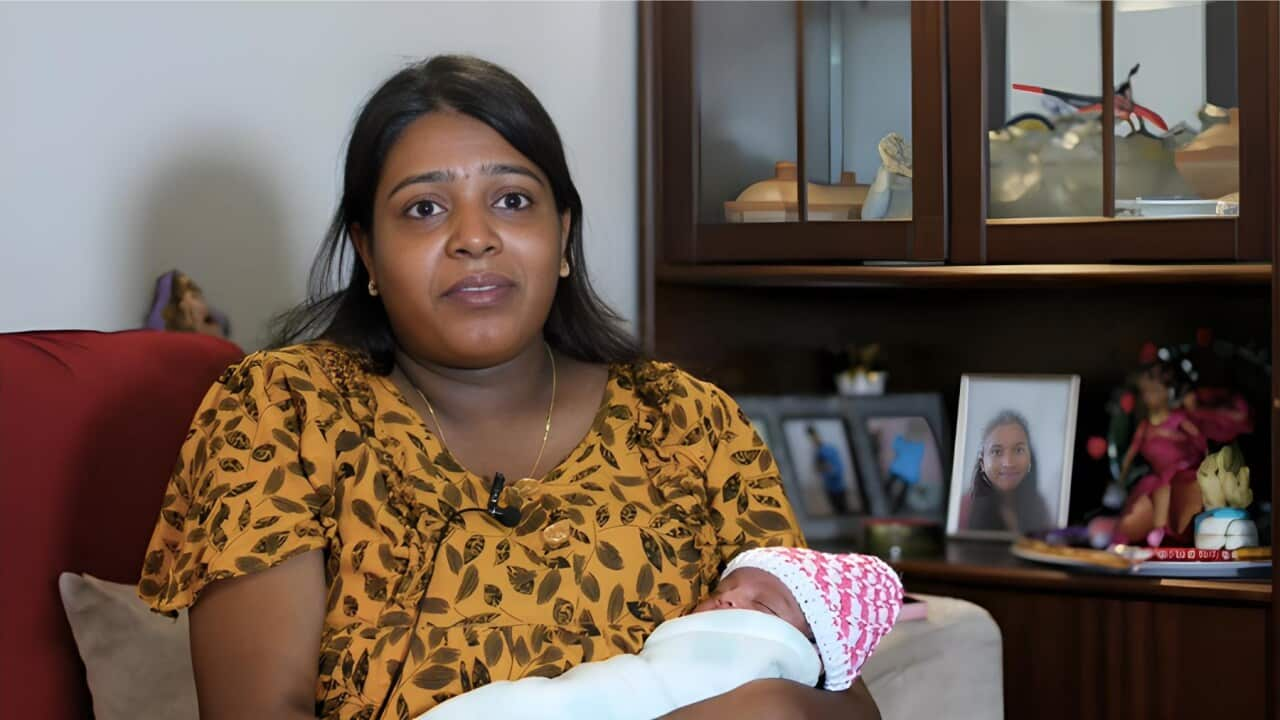TRANSCRIPT
Many Australians may believe that acts of sexual violence are perpetrated by those outside of our immediate familial, work and social circles.
But a new survey out of the Australian Institute of Criminology suggests more than one-in-five Australians have perpetrated at least one form of sexual violence.
Research Manager at the Institute and co-author of the report, Dr Christopher Dowling, says it's one of the first attempts to understand who perpetrators are in Australia and the true prevalence of the issue.
"Really what this research gives us though, is a more direct measure of perpetration, obviously victimisation data and other forms of data, they, I guess, get at the problem indirectly, but what our research does is provide a more direct measure of perpetration. And I guess building on that, it also confirms the gender differences that we know exist in perpetration. So while we did identify a smaller proportion of women who had engaged in sexual violence, the proportions of men who had engaged in it were significantly higher."
The survey quizzed more than 5,000 Australian residents aged 18 to 45.
22.2 per cent said they had committed at least one act of sexual violence since the age of 18 with about 10 per cent [[9.9 per cent]] perpetrating sexual violence in the past 12 months.
The most common forms perpetrated in the previous year were: pressuring someone for dates or sexual activity, emotionally or psychologically manipulating someone to participate in sexual activity, non-consensual kissing, non-consensual touching, pressuring someone to participate in unprotected sexual activity, engaging in image-based sexual abuse, and non-consensual sexual intercourse which 1.8 per cent of respondents admitted to.
Dr Dowling says, while sexual harassment and coercion may seem to differ in severity to sexual assault, there are two main reasons they chose to include these acts as forms of sexual violence.
"The first is that even those forms of violence, which don't typically come to the attention of police, like harassing and threatening someone for sex, emotionally and psychologically blackmailing someone into sex and so on, can still cause significant harm to the people to whom they're done. But also it's likely, and there's a body of evidence suggesting this, that those forms of violence are connected to what some might call more serious forms of violence like non-consensual sexual intercourse, and other forms of physical assault. We're undertaking additional research to better understand the connections between those different forms."
Karen Bevan is the CEO of Full Stop Australia, an NGO which is attempting to end the crisis of sexual violence.
She says the new report may come as a shock to some Australians.
"We know sexual violence is much more prevalent than the reporting that we see to police and we know it's more prevalent than people like to believe. The research isn't a huge shock to us but what I think it is, is a major wake up call to our community that sexual violence is occurring, it is being perpetrated by people we know. It's not just someone else out there, it's actually our friends, our family, our communities."
The report comes amid an ongoing conversation about the rate of violence towards women in Australia, something which Prime Minister Anthony Albanese called a crisis earlier this year.
"Violence against women is indeed a national crisis. It’s a scourge and it’s a stain on our nation and we need to do better. Governments need to do better and we - as a community - need to do better."
And now, the Australian Institute of Criminology's survey suggests men are significantly more likely than women to commit all forms of sexual violence and are also more likely to perpetrate sexual violence more frequently than women.
Kate Fitz-Gibbon is a professor with the Faculty of Business and Economics at Monash University and a leading researcher on gender-based violence.
She says the report clearly shows that campaigns aiming to curb rates of sexual violence need to primarily target men.
"They're twice as likely to pressure someone into taking drugs or alcohol before they asked for sex. And men were then three times more likely than women to self-report having blackmailed someone into sex in the 12 months prior to the survey. So it certainly supports a focus on men as perpetrators and ensuring that we are working with men to address and drive down unacceptable and harmful abusive behaviours."
The latest data from the Australian Bureau of Statistics' Personal Safety Survey shows that about one in five adult women and one in 15 adult men have experienced sexual violence since the age of 15.
Karen Bevan from Full Stop Australia says sexual violence has always been a gendered issue.
"Sexual violence is gendered, it's highly gendered. That doesn't mean that it doesn't affect people of all genders, men, women, people who are gender diverse, trans people. Everyone is impacted by sexual violence."
She says these acts are often rooted in cultural ideas about gender.
"The underpinning drivers of violence against women in particular are gender inequality, they are about views about what's acceptable for a man to do and what's acceptable for a woman to do. We also know that transphobia and homophobia drive attitudes that can be underpinning increased sexual violence committed against people who are gender diverse or transgender. So it is a complex picture, but it's gendered."
Dr Christopher Dowling from the Australian Institute of Criminology says this report is the first of several that are looking to understand who is committing sexual violence and why.
"And these reports will broadly aim to improve our understanding of some of the drivers of sexual violence perpetration. We have a particular focus on pornography use as part of this research, so we'll be paying a lot attention to that specifically. Certainly these results give us a baseline measure of how common perpetration is that we and other researchers can use and build on to look at factors that might increase or reduce the likelihood of perpetration."
And Professor Kate Fitz-Gibbon says one of the immediate steps she believes the Australian government needs to take to turn the tide on sexual violence is increase funding to organisations and campaigns seeking to target perpetrators and support victim-survivors.
"Focus on prevention and early intervention is absolutely critical because it's what's needed to really transform and shift the dial on these rates of prevalence. We have seen a significantly greater focus over the last decade across Australia on prevention, early intervention, but it still has received significantly less funding at the national level than what is needed if we are going to truly achieve what our national plan to end violence against women and children aims to do, which is to end gender-based violence in one generation."
If you or someone you know wants to talk about sexual assault or harassment, family or domestic violence, call 1800RESPECT on 1800 737 732 or you can access 24/7 counselling at 1800 FULLSTOP or that's 1800 385 578.
In an emergency, call 000.













